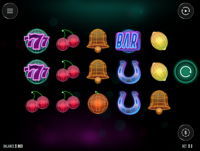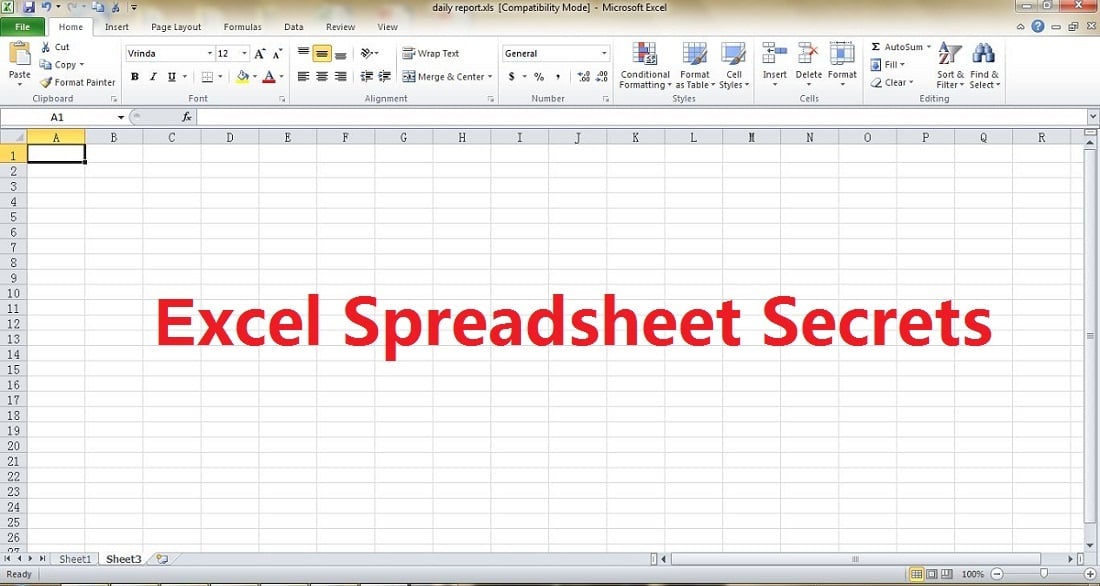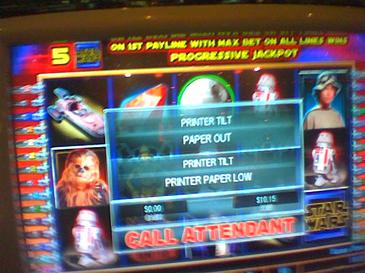- How To Read A Slot Machine Par Sheet Shackelford
- How To Read A Slot Machine Par Sheets
- Slot Machine Percentage Sheet
In brief, the frequency of the various symbols dictates how likely you are to line up the various winning combinations, and those probabilities married to the paytable determines the payback of the machine. Every slot maker creates a 'par sheet' that lists the symbol frequency and the paytable. Answer: The PAR sheet has to give the long-term payback of the machine and show how it is achieved. The probabilities and payoffs have to be listed for the base game, every feature and every bonus round. If a payoff or probability changes with denomination or bet per line, that has to be described on the PAR sheet too. The machine may have a display from the linked progressive but that is simply a display in the glass and it is not integrated with the machine. When the jackpot is won the machine goes into a handpay condition and sends a pulse to the controller signling the jackpot has been won and by which machine. Regarding the PAR sheets.
https://www.sggaming.com/games/WMS/class3/VIDEO/Lock-It-Link-Night-Life-4060Saw lots of people playing this game, both NightLife and Diamonds variations.
out of curiosity, want to know what the various Return % settings are.
I’m not sure how you would go about that without having any contacts.
I have a feeling the 'secrets' (i.e. what you would find on a par sheet) to a slot machine are handled the same way.
Administrator
I think if you tipped a slot technician very well he might tell you what return any given game is set to. It's quite another matter to get the par sheet, which I don't know why a recreational player would want anyway.
how else could I get what the various Return % settings are?
maybe the par sheet isn't what I want?
maybe the marketing summary sheet is what I need?
Administrator
how else could I get what the various Return % settings are?
maybe the par sheet isn't what I want?
maybe the marketing summary sheet is what I need?
You just need the theoretical return. A slot technician would be able to get at that easily if he wanted to.
You just need the theoretical return. A slot technician would be able to get at that easily if he wanted to.

 That's not always true. Sometimes casinos put the par sheet inside the machine, some don't. A regular slot tech wouldn't normally have access to the numbers if they are not in the machine. It would have to be a higher lever tech or Supervisor with access to the Slot Accounting System.
That's not always true. Sometimes casinos put the par sheet inside the machine, some don't. A regular slot tech wouldn't normally have access to the numbers if they are not in the machine. It would have to be a higher lever tech or Supervisor with access to the Slot Accounting System.Also, even if they do have access, not many would be willing to share that information and risk their job for $20 or $50. They would most likely be terminated with no warning if seen or found to be sharing that info.
If it was that easy, par sheets would be all over the place.
ZCore13
https://www.sggaming.com/games/WMS/class3/VIDEO/Lock-It-Link-Night-Life-4060
Saw lots of people playing this game, both NightLife and Diamonds variations.
out of curiosity, want to know what the various Return % settings are.
On the Night Life game the marketing materials say there are five different pay schedules from 87% to 95%.
As for legally finding a PAR sheet as a member of the general public with no relevant contacts, that happens either by complete accident or by someone's carelessness.
- Appendices
- Slots Analysis
- Miscellaneous
Introduction
When it comes to gambling, the easier a game is to understand the worse the odds usually are. This is certainly the case with slot machines. Playing them is as easy as pressing a button. However, between the high house edge and fast rate of play, there is no quicker way to lose your money in a casino.
Before going further, let me make clear that this page addresses the way slot machines work in most parts of the United States and the world. However, some parts of this page do not apply everywhere. For example, I state that slot machines have a memory-less property, where the odds of every spin are the same. In some places, like the UK, some machines in bars, called 'fruit machines,' have a mechanism that guarantees a certain profit over the short run, which causes the game to go through loose and tight cycles. These games do not have the usual independence property of the major slot makers.
How They Work
Whether you're playing a 3-reel single-line game or a 5-reel 25-line game, the outcome of every bet is ultimately determined by random numbers. The game will choose one random number for each reel, map that number onto a position on the reel, stop the reel in the appointed place, and score whatever the outcome is. In other words, the outcome is predestined the moment you press the button; the rest is just for show. There are no hot and cold cycles; your odds are the same for every spin on a given machine.
Slot machines are just about the only game in the casino where the odds are not quantifiable. In other words, the player doesn't know how the game was designed, so it is difficult to look at an actual game to use as an example. So, to help explain how they work, I created the Atkins Diet slot machine (link). It is a simple, five-reel game with a free spin bonus round, much like IGT's Cleopatra game.
For information on how it works and all the odds, please visit my Atkins Diet par sheet.
For a more complicated example, featuring sticky wilds in the bonus, please try my Vamos a Las Vegas slot machine.
For information on how it works and all the odds, please visit my Vamos a Las Vegas par sheet (PDF).
Odds
The following table shows the casino win for Clark County Nevada (where Las Vegas is) for all slots for calendar year 2012. They define 'slot' as any electronic game, including video poker and video keno. I've found video keno to be about equally as tight as reeled slots, but video poker has a much higher return. So, the return for reeled slots should be higher than these figures.
Clark County Slot Win 2012
| Denomination | Casino Win (pct) |
|---|---|
| $0.01 | 10.77% |
| $0.05 | 5.96% |
| $0.25 | 5.74% |
| $1.00 | 5.64% |
| $5.00 | 5.51% |
| $25.00 | 3.97% |
| $100.00 | 4.73% |
| Megabucks | 12.89% |
| Multi-denomination | 5.32% |
| Total | 6.58% |
Source: Nevada Gaming Control Board, Gaming Revenue Report for December 2012 (PDF, see page 6).
Most players play penny video slots. Based on past research, I find the house edge on those to usually be set from 6% to 15%. In general, the nicer the casino, the tighter the slots.
Advice
While there is no skill to playing slots, there is some skill in selecting which machine to play and ways you can maximize your return. What follows is my advice, if you must play slots at all.
- Always use a player card. Slots may be a lousy bet, but the casinos treat slot players very well. A $1 slot player will probably get comped better than a $100 blackjack player. Of course, don't play for the reason of getting comps. You'll give them a lot more than they'll give you.
- The simpler the game, the better the odds. The fancy games with big signs and video screens tend to not pay as well as the simple games. However, slot players always tell me the fancy games are more fun.
- The higher the denomination, the better the odds. For that reason, it is better to play one coin per line on a 5-cent game than five coins per line on a 1-cent game.
- Don't forget to cash out and take your ticket when you leave. It is easy to forget after hitting a jackpot.
- Try to play slowly and as little as possible to get your fix.
- In some games there is a skill feature, like Top Dollar. In such games, advice is usually offered, which you should take.

Myths and Facts
Just about everything that players believe about slots is untrue. Here are the most common myths and facts. As a reminder, this page is based on slot machines commonly found in the United States. Some machines, like 'fruit machines' found in the United Kingdom work differently.

- Myth: Slot machines are programmed to go through a cycle of payoffs. Although the cycle can span thousands of spins, once it reaches the end the outcomes will repeat themselves in exactly the same order as the last cycle.
Fact: This is not true at all. Every spin is random and independent of all past spins.
- Myth: Slot machines are programmed to pay off a particular percentage of money bet. Thus, after a jackpot is hit the machine will tighten up to get back in balance. On the other hand, when a jackpot has not been hit for a long time it is overdue and more likely to hit.
Fact: As just mentioned, each spin is independent of all past spins. That means that for a given machine game, the odds are always the same. It makes no difference when the last jackpot was hit or how much the game paid out in the last hour, day, week, or any period of time.
- Myth: Machines pay more if a player card is not used.
Fact: The mechanism that determines the outcome of each play does not consider whether a card is used or not. The odds are the same with or without one.
- Myth: Using a player card enables the casino to report my winnings to the IRS.
Fact: That makes no difference. If you win $1,200 or more they will report it either way. If you have a net losing year, which you probably will, at least the casino will have evidence of it. Such annual win/loss statements may be used as evidence to declare offsetting loses to jackpot wins.
- Myth: The slot department can tighten my game with the press of a button remotely. Thus, you better be nice to the staff and tip them well, or they will use a remote control to have the machine take you down in a hurry.
Fact: There is now some truth to the myth that the odds of a machine can be changed remotely. Such 'server-based slots' are still experimental and in a minority. Even with server-based slots, there are regulations in place to protect the player from the perceived abuses that could accompany them. For example, in Nevada a machine can not be altered remotely unless it has been idle for at least four minutes. Even then, the game will display a notice that it is being serviced during such changes. (source) Meanwhile, for the vast majority of slots, somebody would physically need to open the machine and change a computer chip, known as an EPROM chip, to make any changes.
- Myth: The machines by the doors and heavy traffic flow areas tend to be loose while those hidden in quiet corners tend to be tight.
Fact: I've studied the relationship between slot placement and return and found no correlation. Every slot director I've asked about this laughs it off as just another player myth.
- Myth: Slots tend to be looser during slow hours on slow days of the week. However, when the casino is busy they tighten them up.
Fact: Nobody would take the trouble to do this, even if he could. The fact of the matter is the casinos are trying to find a good balance between winning some money while letting the player leave happy. That is best achieved by slots loose enough to give the player a sufficiently long 'time on device,' as they call it in the industry, with a reasonable chance of winning so he will return to the same casino next time. If the slots are too tight, the players will sense it and be unlikely to return.
The kind of place you're likely to find tight slots are those with a captive audience, like the Las Vegas airport. So, if the slot manager feels that 92% is the right return for a penny game, for example, he is likely to set every penny game all that way, and keep them that way for years.

How To Read A Slot Machine Par Sheet Shackelford
Play
How To Read A Slot Machine Par Sheets
Analysis
Vamos a Las Vegas
Analysis (PDF). Australian Reels — One Line
Analysis (PDF)
Australian Reels — Five Line
Analysis
21 Bell
Analysis
Fruit Machine
Analysis
Reviews
- Dazzle Me (NetEnt)
- Mr. Vegas (Betsoft)
- Sparks (NetEnt)
Internal Links
- Appendix 1 shows the details and analysis of almost 4000 actual spins on a Reno slot machine.
- Appendix 2 shows an example of the virtual reels behind a hypothetical slot machine and how the average return is calculated.
- Appendix 3A: 2003 Las Vegas slot machine rankings.
- Appendix 3B: 2002 Jean/Primm slot machine rankings.
- Appendix 3C: 2002 Tunica slot machine rankings.
- Appendix 3D: 2002 Henderson/Lake Mead slot machine rankings.
- Appendix 3E: 2002 Quarter and dollar returns for Las Vegas slots
- Appendix 4 shows how the return is calculated for my Wizard's Fruit Slot Machine.
- Appendix 5 analysis of the 21 Bell Slot Machine.
- Appendix 6 Analysis of Red, White, & Blue Slot Machine.
- Lock and Roll analysis of the skill-based slot machine found in North Carolina.
- Deconstructing Jackpot Party analysis of the video slot machine.
- Deconstructing Lion's Share analysis of the classic MGM progressive game.
- Deconstructing Cleopatra analysis of the popular IGT game.
- Deconstructing Lionfish analysis of the slot game found on many Game Maker machines.
- Deconstructing Megabucks.
- Deconstructing the Atkins Diet slot machine.
- Deconstructing Lucky Larry's Lobstermania.
- Deconstructing Hexbreaker.
- Deconstructing Blazing Sevens.
- Deconstructing Hot Roll.
- Mystery progressives on Ainsworth slots.
- Mystery progressives on WMS slots.
- Baltimore Sun article, in which I am quoted.
- 100% Rebate on Slot Losses Promotions: When to quit playing when all losses are refunded.
External Links
- For a simplified explanation of slots, please see my companion site Wizard of Vegas
- German translation of this page is available at richtigspielen.com
- Another decent overview of how slots work and some practical advice for playing them is How Slot Machines Work at VegasClick.com.
- PAR Sheets, probabilities, and slot machine play: Implications for problem and non-problem gambling by Kevin A. Harrigan and Mike Dixon, University of Waterloo, Waterloo, Ontario, Canada. This is an outstanding academic paper that details how some popular slot machines were designed.
- PAR Sheets, probabilities, and slot machine play: Implications for problem and non-problem gambling - Academic paper based on the par sheets for some modern slot machines
Slot Machine Percentage Sheet
Written by: Michael Shackleford